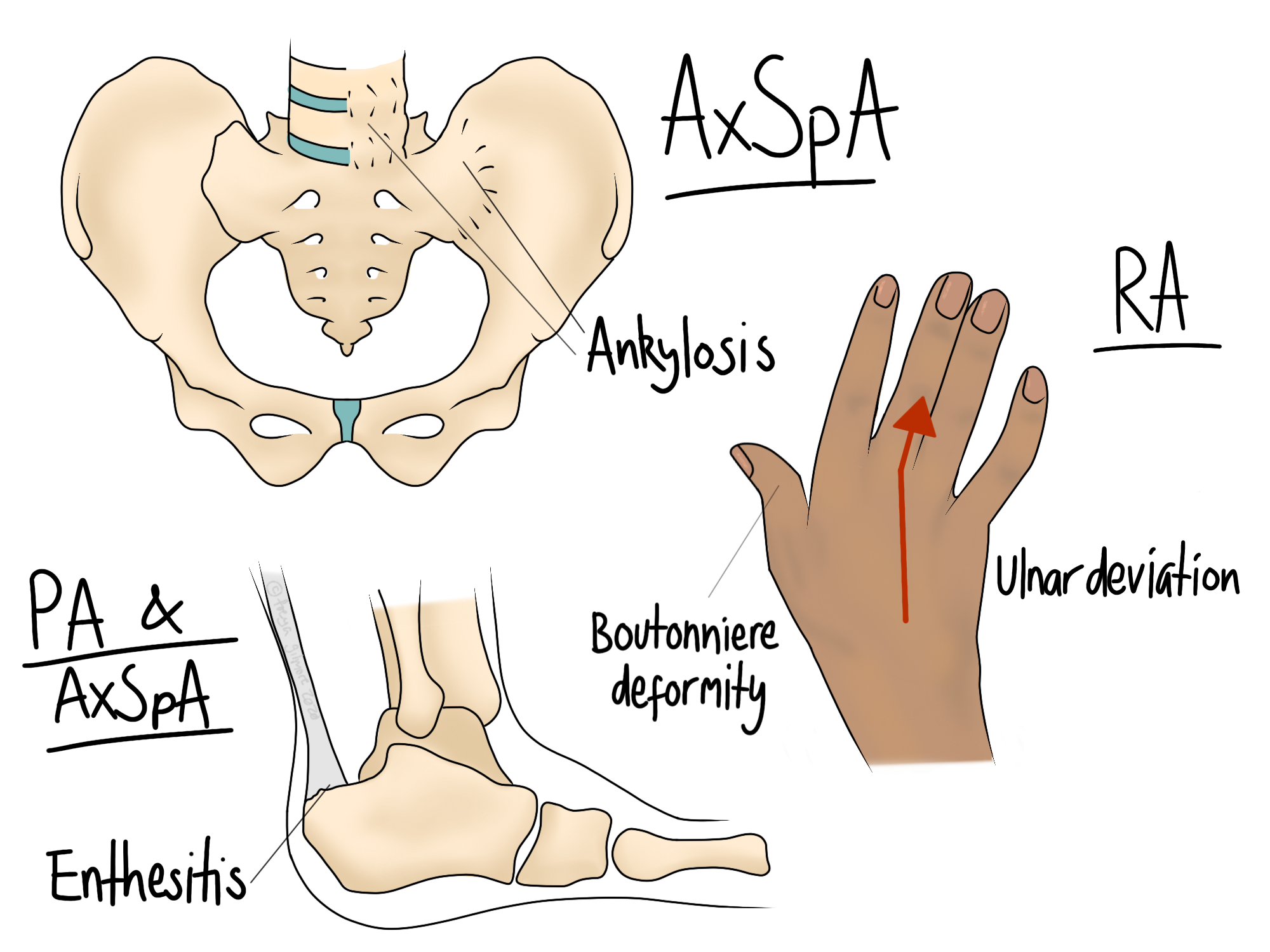Rheumatoid Arthritis
Rheumatoid Arthritis (RA) is an inflammatory form of arthritis that mainly affects small joints, such as those in the hands, feet, and neck. Over time, flare ups can cause deformities of those joints.
Diagnosing Rheumatoid Arthritis
Sometimes RA is mistaken for osteoarthritis (OA), which is the form people often just refer to as “arthritis”. The two are very different. OA is the “wear and tear” form of arthritis, which affects us as we get older. RA can begin as early as your 20s. Both are associated with lumps over the knuckles when the hands and fingers are involved, but RA causes other deformities too. The image above shows how the wrist bends away from the thumb. Although “arthritis” literally means joint inflammation, OA is not really considered an inflammatory condition. In contrast, the disease process of RA involves a lot of inflammation.
A blood test is usually the first step in diagnosing RA. There are a range of markers that can indicate the presence of inflammation and autoimmune conditions. You may also be referred for imaging by your GP. Either your GP or rheumatologist will prescribe medications if appropriate. These can help manage symptoms, as well as reduce future damage to the joints.
How RA Affects a Joint
When RA is triggered, the body begins an immune response, targeting a layer of the joint itself. Damage is caused by the body attacking the joint, and inflammation as a result of this. Over time, this can cause instability in the affected joint, as the joint surface and surrounding capsule are both affected.
After a flare, the body tries to heal the damage. Repeated damage and repair causes the joints to be imperfectly healed, which is where the deformities come from. They are permanent, but generally painless, as they are just bone rather than inflammation.
Management
Your osteopath will work alongside your medication plan. Although we can help with some of the pain and restriction, we cannot prevent the flare ups. For most cases, medication is a vital part of your treatment plan. Treatment might involve massage to relax the muscles that are overworking to protect or compensate for the joint. Gentle movement of the affected joint itself may help to relieve some pain, but we are careful not to do too much. Symptoms are aggravated by both too much and too little movement. This applies to exercise and general activity as well as treatment. We can help support you in returning to exercise- this is an important part of management.
For cases where the joint has become less stable, we will add strengthening to the treatment plan. The neck is a common area to be affected in this way, so by prescribing exercises to strengthen the neck muscles, we can reduce muscle pain.

